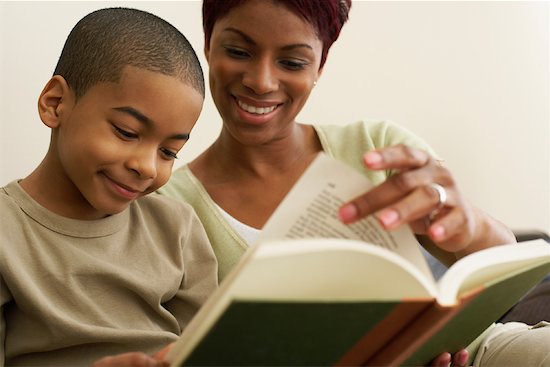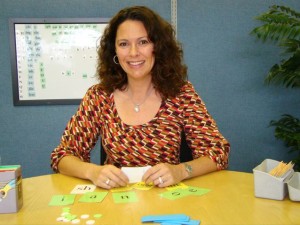
by PRIDE Reading Program Admin | Dec 6, 2015 | A PRIDE Post, Reading Fluency
Do you watch your child struggle to read a book that you feel is just perfect for their age and reading level? Is the reading choppy and slow?
Reading fluency is the process where a child reads aloud expressively and with understanding. When a child reads fluently, the words flow smoothly and at an efficient pace. Reading fluency is a critical component in the reading process. Stumbling and hesitating over words undermines reading comprehension given that by the time the child gets to the end of a sentence he or she will have completely forgotten what was at the beginning of the sentence!
How do you measure reading fluency in your child?
- Ask the child to read a grade level passage that they have never seen or read before.
- Using a timer have the child read this text for one minute.
- While reading the passage, tally the errors the child makes while reading.
- Stop the child after one minute. Count the number of words read in the minute and subtract any errors made by the child. For example: if he or she read 120 words in a minute and made five errors then the child’s reading fluency rate is 115.
- Use the chart below to determine if your child’s reading rate is on target.
Mean Words Correct Per Minute “Targets” for Average Students in Grades One through Eight
| Grade | Fall Target | Winter Target | Spring Target |
| | | | |
| 1 | Not applicable | 20 | 50 |
| 2 | 50 | 70 | 90 |
| 3 | 70 | 90 | 110 |
| 4 | 95 | 110 | 125 |
| 5 | 110 | 125 | 140 |
| 6 | 125 | 140 | 150 |
| 7 | 125 | 140 | 150 |
| 8 | 130 | 140 | 150 |
Johns, J. and Berglund, R. (2006). Fluency strategies and assessments. Dubuque, IA: Kendall/Hunt Publishers.
How do you determine a child’s reading level to test for fluency?
Probably the easiest ways to determine if a book is at an appropriate reading level for your child is the Five Finger Rule. Have the child begin reading a chapter, and put down one finger each time he struggles with a word. If they reach the end of the page before you get to five fingers, the book is written at a comfortable level for independent reading.
What can you do to increase and improve your child’s reading fluency?
The very best way is through practice, both through oral and silent reading.
One approach to practicing reading fluency is for the child to repeatedly read the same passage or text either with a parent or teacher three to four times. Rereading text gives the child multiple opportunities to read unfamiliar words. After repeated reading, those words become familiar. The child should practice rereading aloud texts that are reasonably easy for them and at their reading level and include words that the child already knows and can decode easily. A text is considered at reading level if the child can read it with 95% accuracy. This text should also be relatively short consisting of 50-200 words. First, the parent or teacher reads the text aloud to the child. Then the child reads the same passage to the adult or chorally with the adult. Finally, the child rereads the passage again independently.
Reading frequently will also improve reading fluency since reading is a skill that improves with practice. Children can improve their reading fluency by reading independently each day for at least 20 minutes. Again it is important that the child read a book or text that is at their grade level or slightly below their grade level. Children should be encouraged and allowed to read a book of their choice – even if this doesn’t involve classic novels for their independent reading. For gaining fluency, quantity is more important than quality. Whenever possible, use their interests to guide their reading choices and give them some power in making decisions about what to read.
Memorizing Dolch sight words is another method to improve reading fluency in children. By memorizing common words like “the”, “said”, “what”, “you”, the child will read texts and stories more fluently. Many of these words are in almost anything they read. Readers will have more experiences of success if they know these words. Dolch words are service words; they give meaning and direction, which are necessary for understanding sentences.
Model good reading for your children. Share what you read with them or read what they are reading. Have discussions and talk to them about the things you find important in what you read and why. Parents and teachers need to read themselves and read in front of their children and students. Children will imitate you and will be more likely to read and read well in a house and classroom filled with all kinds of interesting books, magazines and texts.
_______________________________________________________________________________________________________

Karina Richland, M.A. is the Founder of Pride Learning Centers, located in Los Angeles and Orange County. Ms. Richland is a certified reading and learning disability specialist. Ms. Richland speaks frequently to parents, teachers, and professionals on learning differences, and writes for several journals and publications. You can visit the PRIDE Learning Center website at: www.pridelearningcenter.com

by PRIDE Reading Program Admin | Dec 2, 2015 | A PRIDE Post, Reading Disability
Reading is an important first step on a child’s path to success in life. A child that is an excellent reader is a confident child, has a high level of self -esteem and is able to easily make the transition from learning to read to reading to learn. For many of us reading is a natural process and we can read with ease and pleasure. Unfortunately, for a child with a reading disability, the reading process can become a frustrating and negative experience and is often very difficult to master.
What is a Reading Disability?
A reading disability is an inherited condition that makes it extremely difficult to read, write, and spell despite at least an average intelligence.
Learning to read is a sequential process. Each new skill a child learns builds on the mastery of previously learned skills. First, a child learns to break down words into their most basic sounds, which we call decoding. Later on, the child begins to comprehend the meaning of words and sentences, which we call reading comprehension. Decoding is an essential step in the reading process since it forms the foundation of reading. For a child with a reading disability, decoding does NOT come naturally and is NOT an automatic process. Most reading experts will agree that decoding problems is the basis of most reading disabilities.
Does my child have a reading disability?
Some signs of a reading disability:
- Child has difficulties sounding out words
- Slow laborious reading
- Reads without expression
- Ignores punctuation while reading out loud
- Guesses based on first letter of word
- Puts extra sounds into a word
- Drops syllables
- Reverses sounds
- Struggles with spelling
- Substitutes small common words
If your child is struggling in reading and showing the above symptoms, there may be good reason for you to request an immediate assessment. As a parent you want to be certain that you are providing what is needed for your child to succeed in school. To know what is necessary, an assessment is the first thing to do in order to identify the issues to remedy.
What is an assessment?
An assessment is simply a standardized test performed by someone trained and licensed to understand how to give the test and how to interpret the results. Specialists trained to do psychological testing and result interpretation are:
- Clinical psychologist
- School psychologist
- Educational psychologist
- Developmental psychologist
- Neuropsychologist
- Speech and language therapist
How do I get help?
A child with a reading disability will take in and process information differently and needs to be taught by specialists. Students with a reading disability will need to work with a specially trained teacher, tutor, or reading specialist to learn how to read and spell. Students who have been assessed and diagnosed through the school district might qualify for Special Education Services. Children with a reading disability progress best with a sequential, repetitive, systematic and cumulative structured reading program. Fortunately, with the proper assistance and help, most students with a reading disability are able to learn to read and develop strategies to become successful readers.
When is the best time to get help?
Effective early intervention is the key to helping a struggling reader learn to read. This training needs to begin sooner rather than later for the bet results. According to the National Institute of Health (NIH), 95% of children who have trouble learning to read can reach grade level if they receive specialized help early on. Kindergarten to the middle of first grade are the “window of opportunity” to prevent long term reading problems. Without early intervention, the “reading gap” might never close.
There is no reason why a child with a reading disability cannot learn to read and comprehend well. It is important that we never lower the expectations of a child with a reading disability. Children need to feel that even though they are struggling, they are loved and not being judged. So be encouraging and patient and praise often.
Learn more about the New PRIDE Reading Program
_________________________________________________________________________________________________
Karina Richland, M.A. is the Founder and Director of Pride Learning Centers, located in Los Angeles and Orange County. Ms. Richland is a certified reading and learning disability specialist. Ms. Richland speaks frequently to parents, teachers, and professionals on learning differences, and writes for several journals and publications. You can reach her by email at karina@pridelearningcenter.com or visit the Pride Learning Center website at: www.pridelearningcenter.com

by PRIDE Reading Program Admin | May 7, 2015 | A PRIDE Post, Reading Skills
Getting your child interested in reading is one of the most important things you can do as a parent. I understand it isn’t always easy. Just try to think of your time and energy as an investment in your child’s reading future. Here are some practical tips for getting your child interested in reading…
While there aren’t movie equivalents for every book, there is a large selection of children’s literature out there. If you can find them, watch and discuss them together. Some suggestions are: A Series of Unfortunate Events: Lemony Snicket, Charlie and the Chocolate Factory, To Kill a Mockingbird, Charlotte’s Web, Hoot, etc.
- Find books with cartoons or humor — which only a child would find amusing
Not everything needs to be a learning lesson. Letting children read books such as Big Nate or Diary of a Wimpy Kid will keep them engaged and entertained. Although adults might find the language and humor distasteful, children find it very funny and are therefore more motivated to read.
- Zero in on your child’s passions and choose books and magazines focused on areas of interest
Find books on specific topics to keep your child’s interest, such as science, baseball, American Girl dolls, etc. Children who already have the background knowledge, language and vocabulary before beginning a book will have an easier time getting through the reading. Order a magazine subscription to Sports Illustrated for Kids or Nickelodeon. Children love receiving mail and reading ‘their’ magazines.
- Get your child an email account and, together, check it regularly
Using the computer to read and write is a huge advantage for most students. By letting young children write and send email, they practice reading, writing and spelling. Teach your child how to use spell check before sending off messages. Be sure to monitor your child’s ‘pen pals’ – who is your child writing to and receiving mail from? Let your child pick out a few family members, including grandparents and maybe two or three friends. You will find that by using email regularly, your child becomes very strong in typing (keyboarding) and using the computer.
- Find an author that your child likes and stick with it
If your child loves reading Hank Zipzer by Henry Winkler or Tales of a Fourth Grade Nothing by Judy Blume, then you have found a writing style which stimulates your child’s interest. Go through the entire series. Don’t worry if the reading is below grade level: your child is reading for pleasure and for practice. Also remember, just because you loved a certain author or series when you were a kid, this doesn’t mean your child will love the same books you did. Browse the bookstore or library and find the newest, most modern series. Usually these books contain language and themes to motivate the most reluctant reader. Kids need to relate to what they are reading, and modern language usage helps.
- Get books with large print
For some children with learning difficulties, getting books with larger type can be helpful. Maybe it’s because the pages are less intimidating with less text, or maybe it is the fact that there are fewer words on each line, but it seems to make the reading a bit easier.
- Let your child talk to you about the book they are reading.
When we adults read books we enjoy, we like to talk about them. After reading a book, we don’t necessarily want to write a summary, book report or make a project of it. We just want to discuss it with someone else. Look interested in what your child is reading (yes, even if it is Captain Underpants) and ask questions and have your child tell you about it. Laugh with your child about the funny parts (even at the bathroom jokes) and help your child feel good about reading.
Learn more about the New PRIDE Reading Program
_____________________________________________________________________________________________________________________

Karina Richland, M.A. is the Founder of PRIDE Learning Centers, located in Los Angeles and Orange County. Ms. Richland is a certified reading and learning disability specialist. Ms. Richland speaks frequently to parents, teachers, and professionals on learning differences, and writes for several journals and publications. You can visit the PRIDE Learning Center website at: www.pridelearningcenter.com

by PRIDE Reading Program Admin | Apr 19, 2015 | A PRIDE Post, Reading Comprehension
Reading comprehension is not an easy activity. In fact, it can be really hard work! Did you know that without proper interventions, 74% of the children who are poor readers in third grade remain poor readers in the ninth grade? Reading comprehension impacts all subjects in school including literature, science, social studies and even math. For students to do well academically, they must be able to comprehend the material they are reading. Reading research shows that good readers:
- are active readers and have goals in mind as they are working through a text.
- make predictions about what is to come
- look over the structure of the text before they read to determine which sections are the most relevant to their reading goals.
- read selectively, determining which sections to read carefully , which to read quickly, which not to read, and so on.
- construct, revise, and question the meanings they make as they read.
- try to determine meaning of unfamiliar words and concepts in the text.
- read various types of texts differently. In narrative, a good reader pays close attention to the setting and characters but in expository text, a good reader frequently summarizes what they have read.
- Feel a sense of satisfaction and productivity after reading a text
Research according to the National Reading Panel 2000, has proven that explicit and direct instruction is the core of good reading comprehension. Children need to learn to use comprehension strategies before, during and after they read. Here are a few research-based strategies that help students become active readers:
Predictions
Students are encouraged to generate expectations about what characters might do, or how the plot might evolve, based on their own experiences in similar situations. Making a prediction activates the student’s prior knowledge and therefore provides a foundation for any new information they will learn while reading. This prior knowledge facilitates their understanding of new ideas encountered in text. Researchers in the field of reading comprehension (Anderson, Wilkinson, Mason, & Shirey, 1990) found that prediction activities promoted overall story understanding if the predictions were explicitly compared to text ideas during further reading. Some activities that support predicting include:
- read the title of the book and discuss what clues about the story does the title provide
- discuss the illustration on the cover and ask student what it makes them think of
- discuss if this is a real or make-believe story
Think-aloud
Think-aloud involves making one’s thoughts audible and saying what you are thinking while you are reading. This strategy has been shown to improve students’ comprehension when both students themselves engage in the think-aloud and when teachers also use think aloud while reading to students. A study by Bereiter and Bird (1985) showed that students who were asked to think aloud while reading had better comprehension than students who were not taught to think aloud, according to a question-and-answer comprehension test. Another study by Silven and Vauras (1992) demonstrated that students who were prompted to think aloud as part of their comprehension training were better at summarizing information in a text than students whose training did not include think-aloud. An example of a think aloud goes something like this:
The teacher reads a section of a text and talks out loud to the children to show that he/she is engaged and reading actively.
- “This reminds me of a time when I…”
- “I wonder why…”
- “I know about this topic because I…”
Story Structure
Story structure involves how stories and plots are organized. Essentially every reader is taken down a path with characters, a setting, some sort of activity or conflict and a resolution. Understanding this structure of the story or plot is conducive to understanding and deriving meaning from literature. It enables the child to organize in his or her mind what exactly they are reading. Some activities that support story structure include:
- create and fill out a chart detailing the four parts of a story, including the characters, plot, conflict, and resolution.
- draw or write a comic strip recreating the story
- Use a graphic organizer or story map to chart out the structure of the story
Visualization
Visualization involves picturing in your mind what is happening in the text. This can help transform students from passive readers to active readers while simultaneously improving their reading comprehension. By vividly visualizing the events depicted in the text, creative readers allow themselves to become part of the story; they see the colors, hear the sounds, feel the textures, taste the flavors, and smell the odors the writer describes. The more the students practice this strategy, the more automatic it becomes during reading. Some activities that support students in visualizing include:
- sketch a picture while reading or listening to a descriptive story.
- look at wordless picture books and then write the words that would create the pictures in the books.
- dramatize a story
Summarization
To summarize a student needs to be able to pull out the main idea, focus on key details, use key words and phrases, and break down the larger ideas. Summarizing is an extremely difficult task for most students. Many children require instruction and practice in summarizing before they are able to produce good oral and written summaries of text. Some activities that support summarizing include:
- take articles from a newspaper and cut off the headlines and then have students write their own headlines of the story.
- with different colored highlighters have students underline key words, phrases, vocabulary and ideas that are relevant to understanding the text.
- use a graphic organizer with Who, What, When, Where, Why, and How.
Success in school and beyond depends in great measure upon the ability to read with strong comprehension. When students make connections to the text they are reading, their comprehension increases. Good readers constantly try to make meaning out of what they read by seeing how it fits with what they already know. When we help students make those connections before, during, and after they read, we are teaching them critical comprehension strategies that the best readers use almost instinctively.
Learn more about the New PRIDE Reading Program

Karina Richland, M.A. is the Founder and Director of PRIDE Learning Centers, located in Los Angeles and Orange County. Ms. Richland is a certified reading and learning disability specialist. Ms. Richland speaks frequently to parents, teachers, and professionals on learning differences, and writes for several journals and publications. You can visit the Pride Learning Center website at: www.pridelearningcenter.com

by PRIDE Reading Program Admin | Feb 14, 2015 | A PRIDE Post, Reading Disability
Reading is an important first step on a child’s path to success in life. A child that is an excellent reader is a confident child, has a high level of self -esteem and is able to easily make the transition from learning to read to reading to learn. For many of us reading is a natural process and we can read with ease and pleasure. Unfortunately, for a child with a reading disability, the reading process can become a frustrating and negative experience and is often very difficult to master.
What is a Reading Disability?
A reading disability is an inherited condition that makes it extremely difficult to read, write, and spell despite at least an average intelligence.
Learning to read is a sequential process. Each new skill a child learns builds on the mastery of previously learned skills. First, a child learns to break down words into their most basic sounds, which we call decoding. Later on, the child begins to comprehend the meaning of words and sentences, which we call reading comprehension. Decoding is an essential step in the reading process since it forms the foundation of reading. For a child with a reading disability, decoding does NOT come naturally and is NOT an automatic process. Most reading experts will agree that decoding problems is the basis of most reading disabilities.
Does my child have a reading disability?
Some signs of a reading disability:
- Child has difficulties sounding out words
- Slow laborious reading
- Reads without expression
- Ignores punctuation while reading out loud
- Guesses based on first letter of word
- Puts extra sounds into a word
- Drops syllables
- Reverses sounds
- Struggles with spelling
- Substitutes small common words
If your child is struggling in reading and showing the above symptoms, there may be good reason for you to request an immediate assessment. As a parent you want to be certain that you are providing what is needed for your child to succeed in school. To know what is necessary, an assessment is the first thing to do in order to identify the issues to remedy.
What is an assessment?
An assessment is simply a standardized test performed by someone trained and licensed to understand how to give the test and how to interpret the results. Specialists trained to do psychological testing and result interpretation are:
- Clinical psychologist
- School psychologist
- Educational psychologist
- Developmental psychologist
- Neuropsychologist
- Speech and language therapist
How do I get help?
A child with a reading disability will take in and process information differently and needs to be taught by specialists. Students with a reading disability will need to work with a specially trained teacher, tutor, or reading specialist to learn how to read and spell. Students who have been assessed and diagnosed through the school district might qualify for Special Education Services. Children with a reading disability progress best with a sequential, repetitive, systematic and cumulative structured reading program. Fortunately, with the proper assistance and help, most students with a reading disability are able to learn to read and develop strategies to become successful readers.
When is the best time to get help?
Effective early intervention is the key to helping a struggling reader learn to read. This training needs to begin sooner rather than later for the bet results. According to the National Institute of Health (NIH), 95% of children who have trouble learning to read can reach grade level if they receive specialized help early on. Kindergarten to the middle of first grade are the “window of opportunity” to prevent long term reading problems. Without early intervention, the “reading gap” might never close.
There is no reason why a child with a reading disability cannot learn to read and comprehend well. It is important that we never lower the expectations of a child with a reading disability. Children need to feel that even though they are struggling, they are loved and not being judged. So be encouraging and patient and praise often.
Learn more about the New PRIDE Reading Program
Karina Richland, M.A. is the Founder and Director of Pride Learning Centers, located in Los Angeles and Orange County. Ms. Richland is a certified reading and learning disability specialist. Ms. Richland speaks frequently to parents, teachers, and professionals on learning differences, and writes for several journals and publications. You can reach her by email at karina@pridelearningcenter.com or visit the Pride Learning Center website at: www.pridelearningcenter.com







